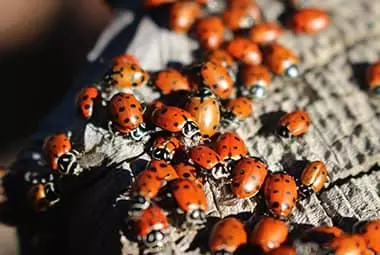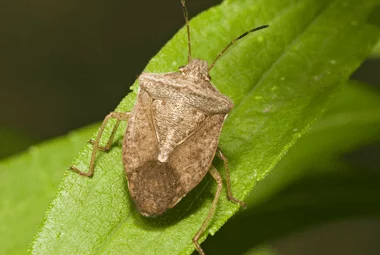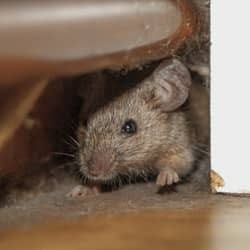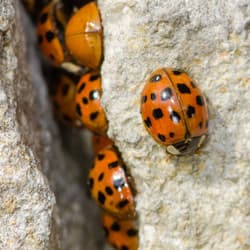No matter what the season, no one wants to deal with invading pests. However, there are a select few pests that invade homes during the fall for the purpose of overwintering. Ladybugs, boxelder bugs, and stink bugs are all species of insects that seek out safe, warm areas where they can avoid the winter weather and wait for spring. Often, our homes become a target for these nuisance insects, which can be both frustrating and annoying to deal with.
Boxelder Bugs
These red and black insects become problematic in the fall because of their tendency to invade homes in large numbers. Boxelder bugs will flock to the warmest exterior wall of your home once the weather begins to cool, and will then come in through any cracks or gaps around vents, windows, walls, and doors. Once inside, boxelder bugs can become a nuisance because of the large numbers they come in, and their tendency to seek out the warmest spot in your home—which is often around A/C units. If they gather around your heating system in large clusters, it can cause your A/C unit to overheat. Additionally, boxelder bugs can stain curtains, walls, and fabrics with their feces.
Ladybugs
Ladybugs are another insect species that enter homes during fall to escape the cold. Once they find a way inside through gaps around windows and doors, they generally stay within attics, wall spaces, and underneath floors, but will emerge anytime there happens to be a sunny winter day to congregate on windowsills. Ladybugs also excrete a yellow liquid when they are threatened or squished, which can stain upholstery, walls, and furniture.
Stink Bugs
Usually considered an agricultural pest during other parts of the year, stink bugs become a nuisance for homeowners during the fall and winter months when they invade homes to escape the colder weather. Similarly to both ladybugs and boxelder bugs, stink bugs will cluster on the sunniest side of buildings and find their way inside through any crevices in exterior walls, vents, and windows. Living up to their name, stink bugs will produce a foul-smelling liquid if crushed or threatened, which can stain furniture as well as curtains.
For any issue with overwintering pests, it is always important to contact professional pest control once you realize you have a problem. Russell’s Pest Control offers a wide variety of pest control services, including our residential pest control programs. Boxelder bugs, stink bugs, and ladybugs can be difficult to get rid of, especially when they come inside in large numbers. But with Russell’s Pest Control on your side, your home can be pest free in no time.



